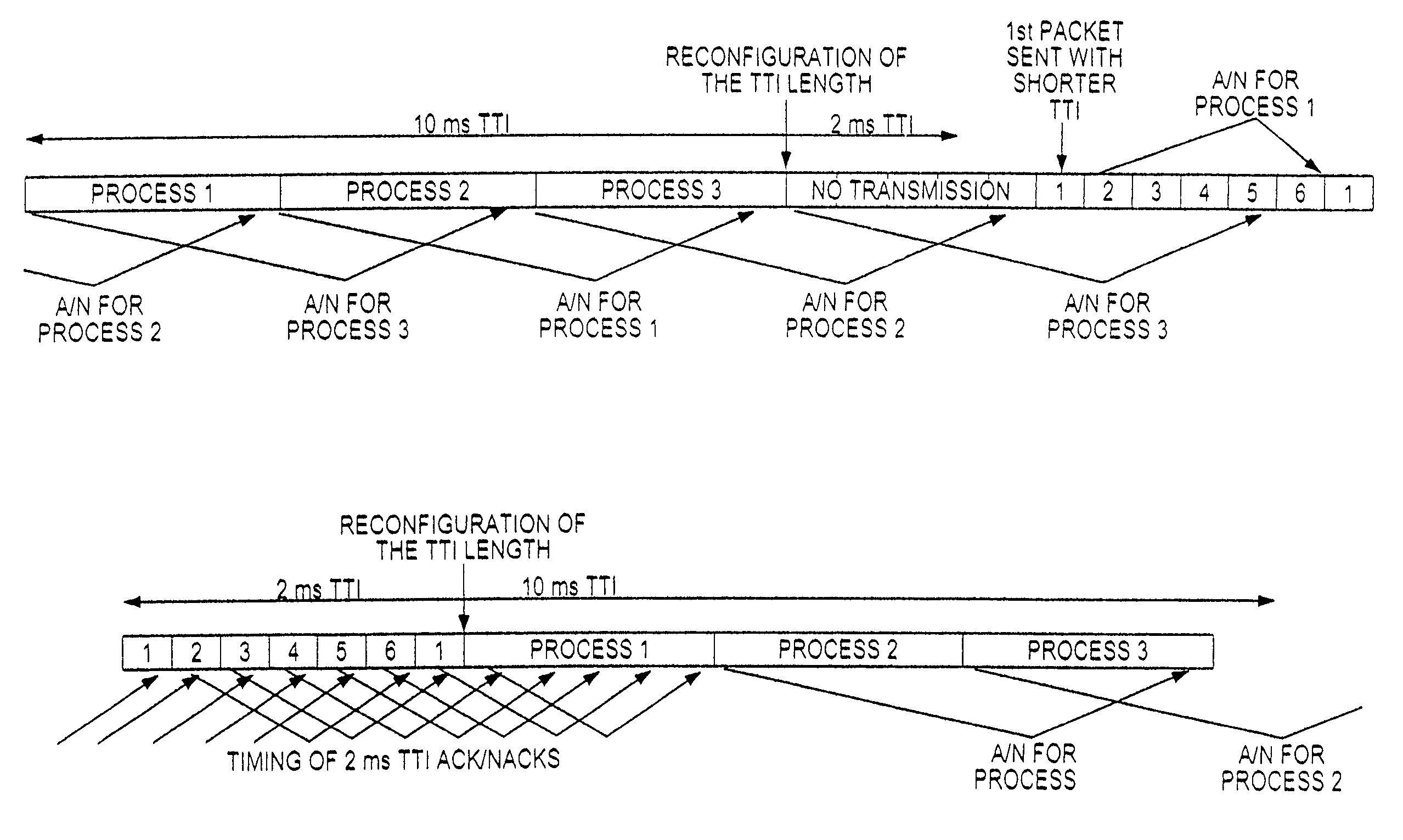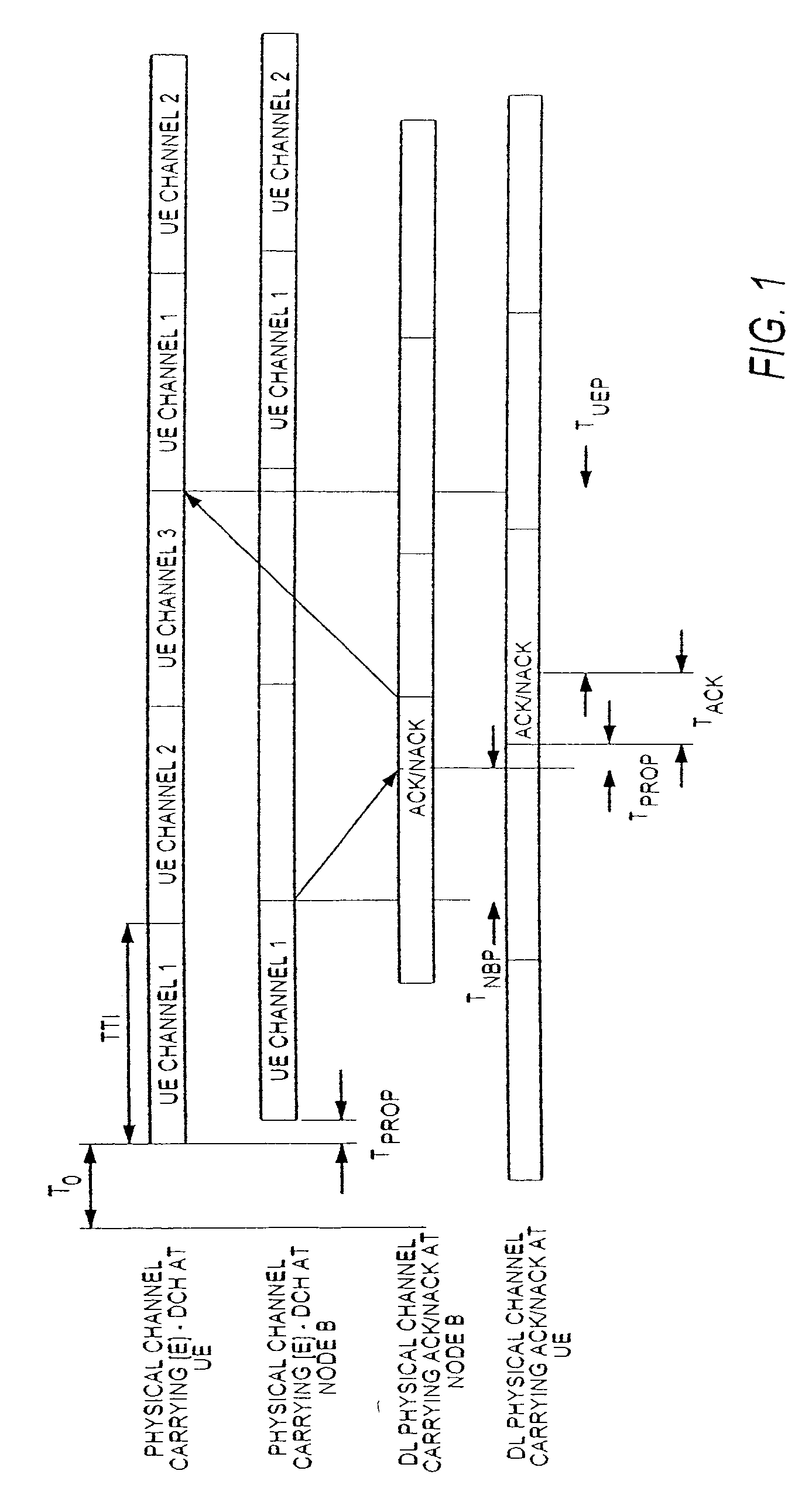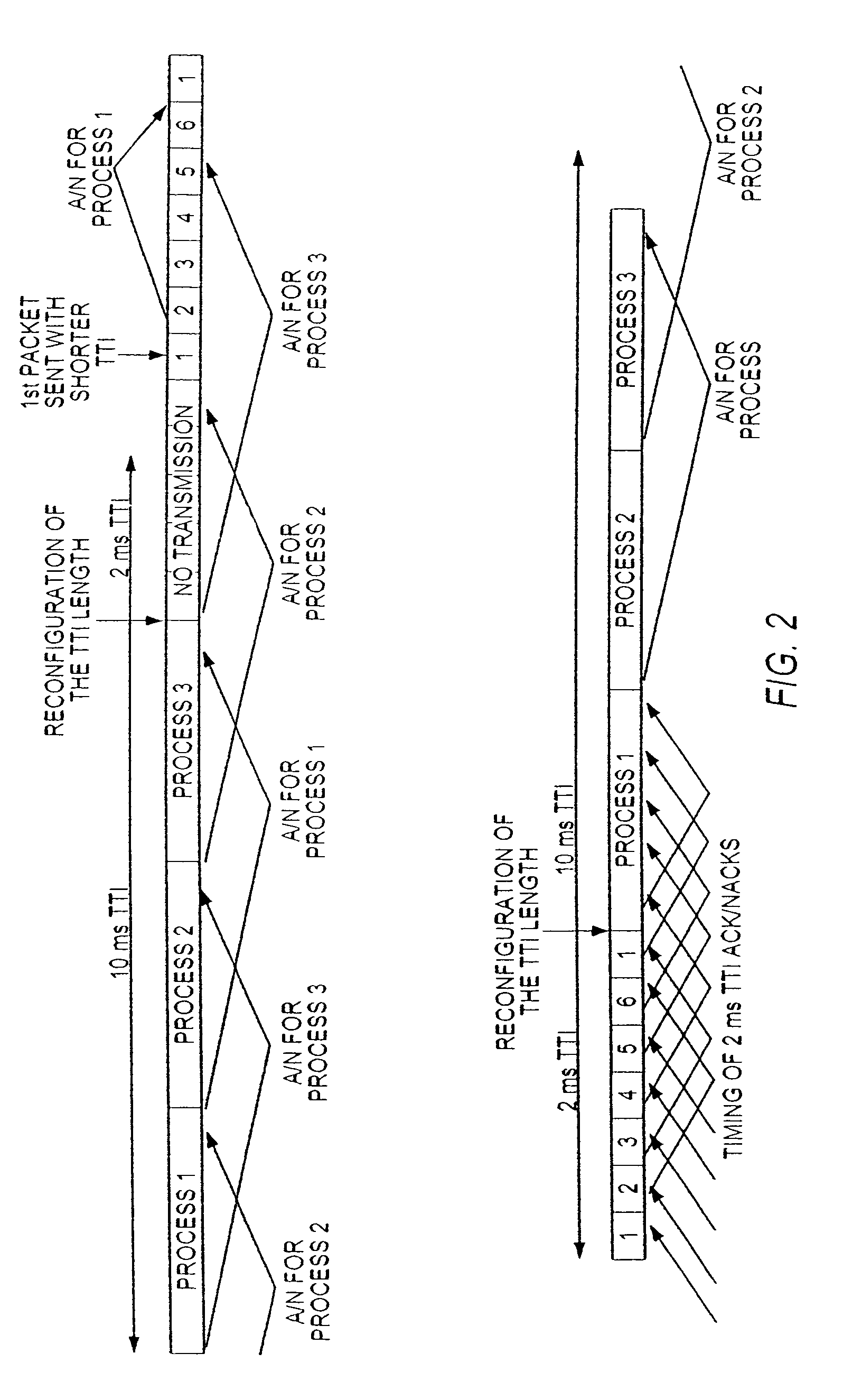WCDMA uplink HARQ operation during the reconfiguration of the TTI length
a technology of uplink and harq, which is applied in the field of wcdma uplink harq operation during can solve the problems of imparting delay in the reconfiguration of the tti length, and achieve the effect of minimizing data loss and large delays
- Summary
- Abstract
- Description
- Claims
- Application Information
AI Technical Summary
Benefits of technology
Problems solved by technology
Method used
Image
Examples
Embodiment Construction
[0024]The present invention is directed to a method for minimizing the loss of data and / or ensuring that large delays do not occur when the uplink TTI length of a WCDMA High Speed Packet Uplink Access (HSUPA) air interface is reconfigured. In accordance with the present invention, there are multiple techniques for ensuring that a system responds reasonably in the event of a change of the uplink TTI length. For example, a key element of Hybrid Automatic Repeat Request (HARQ) is that the transmission energy of unsuccessfully received packets is stored in a receiving device as soft symbols and a request for retransmission is sent as feedback information from the receiving device to the transmitting device. These soft symbols, which are obtained from different attempts to transmit the same packet, can be combined to create a single instance of the data packet. As a result, if a specific packet is transmitted twice and incorrectly received both times, then the incorrectly received packet...
PUM
 Login to View More
Login to View More Abstract
Description
Claims
Application Information
 Login to View More
Login to View More - R&D
- Intellectual Property
- Life Sciences
- Materials
- Tech Scout
- Unparalleled Data Quality
- Higher Quality Content
- 60% Fewer Hallucinations
Browse by: Latest US Patents, China's latest patents, Technical Efficacy Thesaurus, Application Domain, Technology Topic, Popular Technical Reports.
© 2025 PatSnap. All rights reserved.Legal|Privacy policy|Modern Slavery Act Transparency Statement|Sitemap|About US| Contact US: help@patsnap.com



